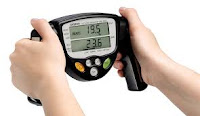A healthy and balanced diet is the key to a healthy body.
Nutrients are molecules in food that all organisms need to make energy, grow, develop, and reproduce. Nutrients are digested and then broken down into basic parts to be used by the organism. they’re vital for disease prevention, and good health. a balanced diet should include a variety of nutrients.Their daily needs and resources
Knowing the nutrients is very important to staying healthy. Below are the nutrients and their sources.
1. Nutrients - Iron
Iron is a part of red blood cells and helps in transportation of oxygen in the body. In case of iron deficiency, or anemia, the body’s efficiency to transport oxygen decreases. As a result you may feel lethargic and fatigued.
Daily requirement :- The recommended amount of iron is 18g/day.
Sources:- Rich in iron are green leafy vegetables, nuts, beans and pulses, whole grain,pomegranate etc.
2. Nutrients - Calcium
It is a vital nutrient for the body as it helps in providing strength to your bones. Strong bones are less prone to fracture and diseases like osteoporosis. Calcium also plays a role in nerve transmission, maintenance of healthy blood vessels and muscle contraction.
Daily requirement :- Intake of calcium should be 1g/day.
Sources:- Rich sources of Calcium are dairy products like milk, curd, paneer and green leafy vegetables like spinach, broccoli, etc.
3. Nutrients - Fiber
Dietary fiber helps in proper bowel movement and provides bulk to your stool which decreases the chances of constipation. It also helps in regulating blood sugar levels in the body as the presence of fiber in food slows down the absorption of the sugar. Soluble dietary fiber helps in controlling the levels of cholesterol by reducing the levels of “bad” fat from the body.
Daily requirement :- Intake of fiber should be 40g/day.
Sources :- Include fruits, vegetable, whole grains and legumes in your daily diet.
4. Nutrients - Magnesium
Many studies have shown that magnesium with calcium helps in improving the bone mineral density in the body. Magnesium deficiency can affect calcium metabolism and a fluctuation in the levels of hormones that regulate calcium can result in osteoporosis. It is associated with lowering the risk of coronary heart disease and helps in regulating high blood pressure. It also plays a major role in controlling diabetes, migraines, insomnia, and depression.
Daily requirement :- Intake of magnesium should be 410mg/day.
Sources:- Include nuts, whole grains, wheat germ, fish, and green leafy vegetables in your diet.
5. Nutrients - Potassium
It is one of the electrolytes and even helps in managing electrolyte levels in the body. A diet high in potassium levels is associated with improved blood pressure control. It also contributes to improved kidney function, reduction in blood clotting, and more efficient opening of blood vessels.
Daily requirement :- Intake of potassium should be 4.7g/day.
Sources:- Rich sources of potassium are lima beans, potatoes, yams, bananas and soybeans.
6. Nutrients - Protein
Protein is the building block of tissues. It is required to repair the daily wear and tear of the cells in the body. Protein is an important part of the diet as it helps in building muscles.
Daily requirement :- Intake of protein should be 46-56g/day.
Sources:-Rich sources of protein are milk, curd, paneer, eggs, lean cuts of chicken, soy and beans etc.
7. Nutrients - Vitamin A
Vitamin A plays a major role in maintaining vision, cell growth and promotes healthy tissue and skin. It also participates in physiological activities related to the immune system, inflammatory system, maintenance of epithelial and mucosal tissues, creation of red blood cells, and bone development.
Daily requirement :- Intake of vitamin A should be 600-900 µg/day.
Sources:- Rich sources of vitamin A are sweet potato, carrot, spinach, Green leafy vegetables, etc.
8. Nutrients - Vitamin C
Vitamin C is also a type of antioxidant that protects your body against free radical damage. Apart from this, vitamin C supports collagen production in joints. Collagen is a shock absorbing gel like substance which fills up the space between two bones in a joint.
Daily requirement :- Intake of vitamin C should be 75-90mg/day.
Sources:- Rich sources of vitamin C are citrus fruits, nuts, vegetables, etc.
9. Nutrients Vitamin D
Vitamin D increases the absorption of calcium in the body and helps in building strong bones. It helps in regulating insulin activity and blood sugar balance in the body and prevents muscle weakness.
Daily requirement :- Intake of vitamin D should be 600 IU/day.
Sources:- Rich sources of vitamin D are milk, egg, and fatty fishes like salmon, tuna and some variety of mushrooms. To get your daily dose of vitamin D morning sunlight is the best source. There are hormones beneath the skin which produce Vitamin D with help from sunlight.
10. Nutrients - Vitamin E
Vitamin E is a type of antioxidant which protects your body cells from free radical damage. Free radicals lead to breakdown of healthy cells and may contribute to heart disease and cancer. It also helps strengthening immunity.
Daily requirement :-Intake of vitamin E should be 15mg/day.
Sources :- To get daily dose of this vitamin include nuts, vegetable oil, eggs and green leafy vegetables in daily diet.











